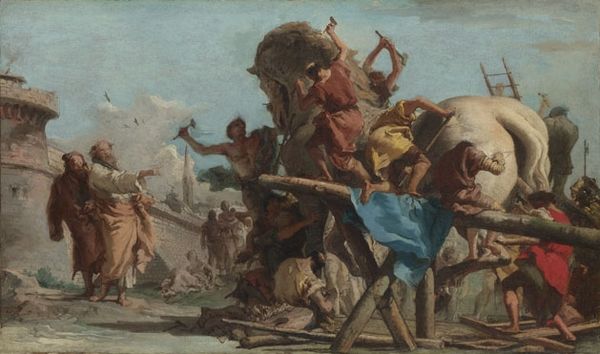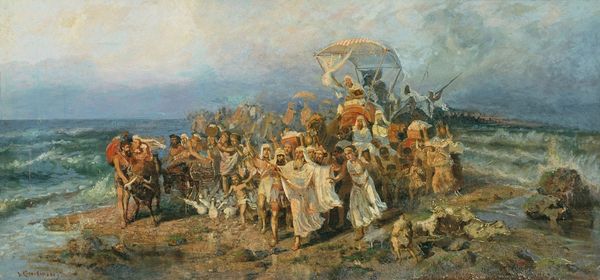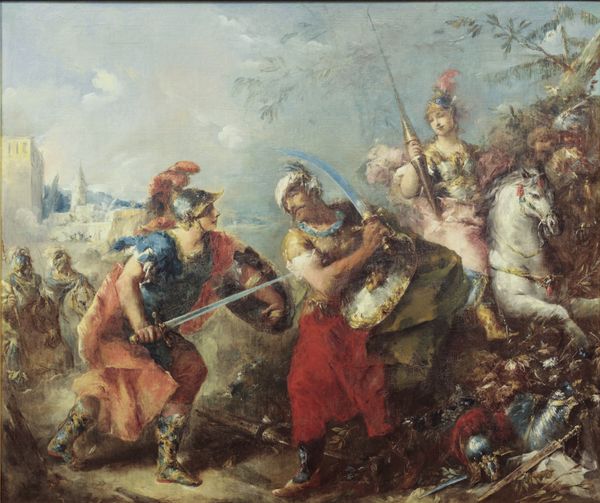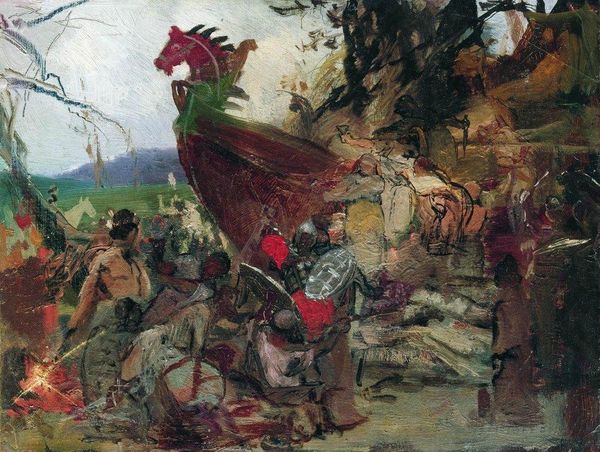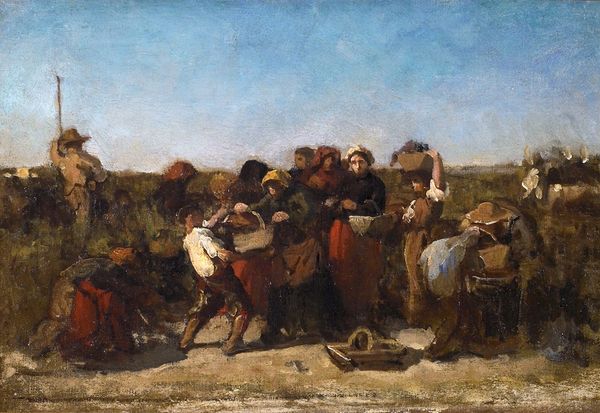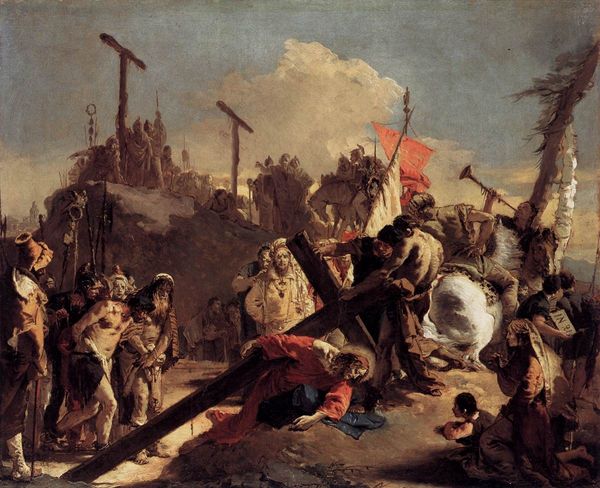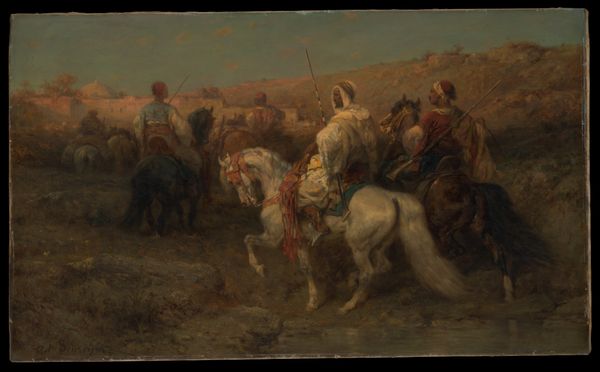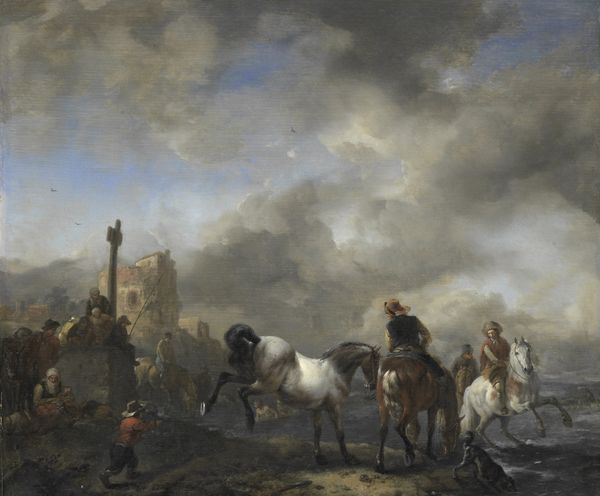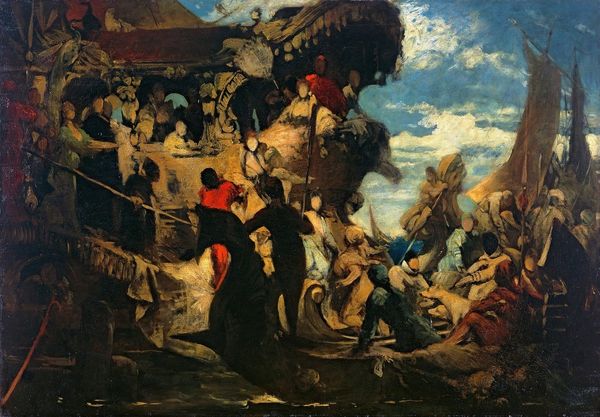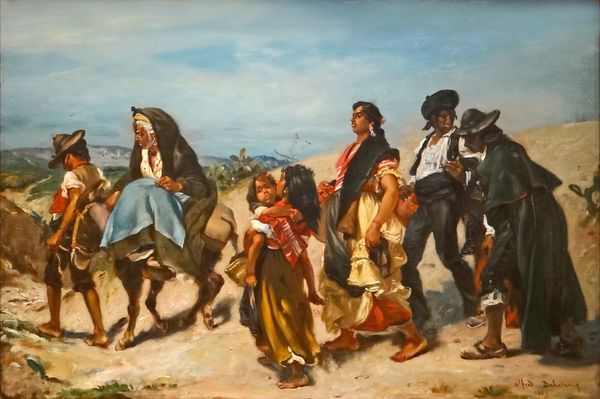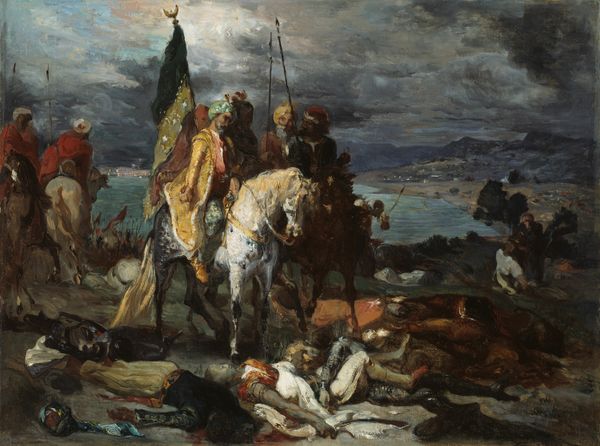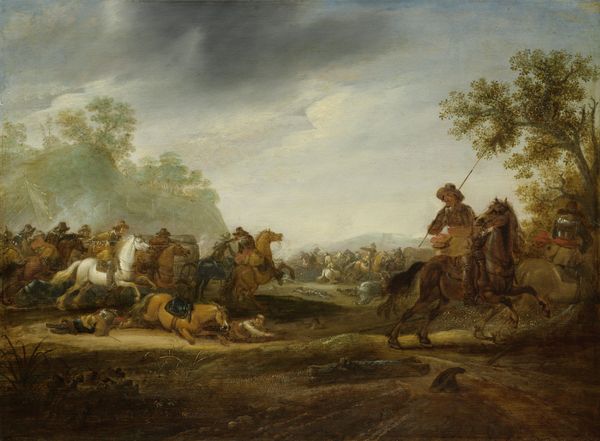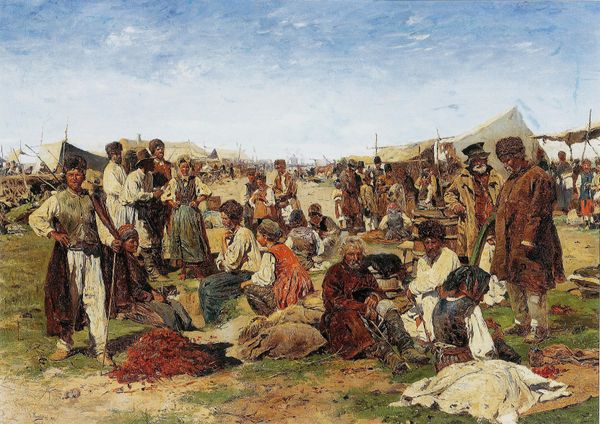
painting, oil-paint
#
painting
#
oil-paint
#
landscape
#
soviet-nonconformist-art
#
figuration
#
social-realism
#
oil painting
#
painterly
#
genre-painting
#
realism
Dimensions: 38 x 51 cm
Copyright: Serhij Schyschko,Fair Use
Curator: Serhij Schyschko's "Return from Work," painted in 1933, presents a group of laborers walking along a path, rendered in oil paint with visible, expressive brushstrokes. What's your initial response to this genre scene? Editor: There’s a weariness that permeates the painting, yet the faces of the figures at the front exude an unexpected joyfulness. The soft colors and indistinct shapes give it a dreamlike quality, but those agricultural tools tell a stark story of physical labor. Curator: Absolutely, the image evokes the realities of rural life in the early Soviet era. The work can be situated within the Social Realism movement, though Schyschko manages to transcend pure propaganda. Notice how the laborers are idealized, yet they still carry the weight of their tools and toil. I see complex statements on gender roles, too. Who is at the forefront and what does that say about community in that time? Editor: Those tools indeed tell tales! Consider the rakes – ubiquitous agricultural symbols throughout art history representing both abundance and backbreaking work. Here, their prominent placement might signify not just labor but also the collective spirit. In an older symbolic visual language, the figures might reference allegories of nature or virtue, but here there seems to be more complexity and nuance in their social positioning. Curator: The layering of meaning is certainly present. As the Soviet Union actively reshaped agricultural practices through collectivization, artistic portrayals of rural life served as powerful ideological tools. Understanding the power dynamics, social stratifications, gendered work is paramount. Schyschko had to carefully negotiate state expectations and potential critique. Editor: And yet, there's an undeniably personal feel, a certain warmth radiating from the painting. The soft blues and greens speak of hope, maybe. Could that joyful woman at the forefront signal resilience? Curator: That’s where the painting really complicates itself for me. The formal and stylistic choices move beyond the prescribed didacticism typical of that era. By focusing on the dignity and perhaps even pleasure amidst labor, it gestures towards a more hopeful reading. Editor: It’s as if the artist imbues those ancient symbols with a very specific humanity tied to a historical moment, to show a reality more intimate than broad historical sweeps might permit. That quiet interaction between art and viewer seems central here. Curator: Indeed, Schyschko presents a scene filled with ambiguity, offering space for contemporary viewers to reconsider this intersection of personal and collective narratives through intersectional readings and engagements. Editor: For me, these echoes across centuries elevate the moment and these ordinary people, with every tool and loaded symbol adding layer upon layer of meaning, memory, and humanity to what at first appears like a scene so straightforward.
Comments
No comments
Be the first to comment and join the conversation on the ultimate creative platform.
